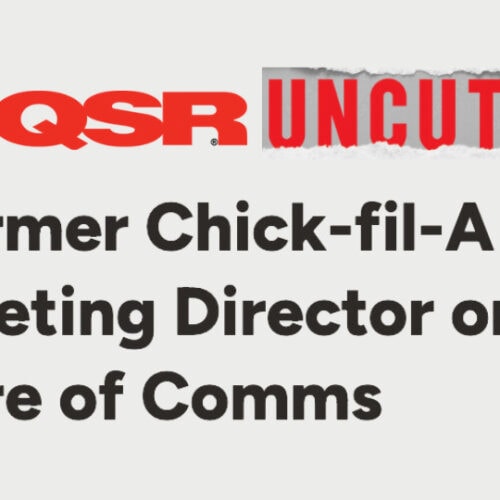Public relations is considered the most effective discipline for the investment under the marketing umbrella. Traditional advertising and performance marketing require hefty budgets to guarantee placements of a brand’s own creation. Meanwhile, PR earns credible third-party content that works hard by elevating the positive recommendations and experiences of others. This earned content can then be amplified by advertising and sales teams. Further, PR focuses on strategic messaging and campaigns that build and maintain a brand’s position with stakeholders through fluctuating dynamics – such as looming recessions and hot button culture moments.
Historically, paid tactics have been easier to measure with earned’s ROI in question. Today, plugged-in PR practitioners have strengthened reporting libraries to accurately reflect performance and impact, and identify signals that require change.
This PR evolution emphasizes greater flexibility and accountability, which helps C-suite and senior marketing leaders.
Strengthening PR’s Role and Agility Today with OKRs vs. KPIs
Around the marcom table, PR has traditionally been labeled an awareness tool, supporting the top of the funnel with “impressions” earned through media coverage or social content.
Yes, PR builds awareness, but targeted campaigns can also usher prospective audiences down the funnel with strategies and tactics that provide more measurable performance marketing results.
- Consider an earned article that brings people to your website, which provides the data to target people with ads on social media and use them to collect opt-in emails.
- Think of an influencer who is trusted in their industry to educate followers about financial investments and points to your newest research and data, found on a web landing page.
To optimize budgets and successful outcomes in a fluctuating landscape, PR should join its performance marketing peers in the shift from using Key Performance Indicators (KPIs) to Objectives + Key Results (OKRs).

As we explained in a recent blog post, KPIs are known as “set it and forget it” style annual goals – like total impressions – and are assessed at a campaign’s end. Measuring against KPIs could mean setting a plan and sticking with it, even if the landscape changes or initial strategies aren’t working. For example, what if TikTok gets banned, or the U.S. falls into a deeper recession?

OKRs empower teams to conduct quarterly analyses of a campaign’s performance and counsel on agile pivots. To set OKRs, start with the framework: “I will [objective] as measured by [key result].”
OKRs can have both quantitative and qualitative key results, for example:
- “I will increase product awareness by driving 1 million visitors to our website.”
- “I will improve brand affinity by surveying, analyzing + addressing customers’ concerns.”
In these examples, the PR team will outline the strategies and tactics they’re pursuing to reach these goals and can recommend changes to the original approach as needed.
Let’s say a brand team wants to experiment with an influencer campaign but wants to test the messaging or call to action. Once the campaign is live, you can track share of voice, public sentiment, SEO impact, website referrals, engagement rates, attention and more. You can evaluate whether you need to look at new influencer creators, new messaging or new CTAs. You can assess whether customer drop-off is occurring with the content or on the web page, which could mean editing that content. You can also bring strong content to even more eyes with paid targeting.
PR for Now + Next: How to embrace agility and OKRs
Approaching PR planning with agility and OKRs should meet many brands where they are: facing challenges to do more with less. Here’s how to get started:
- Reframe the perception that PR is solely about earned media. Media relations is best led by PR teams, but as our examples show, it is stronger when complemented by digital, social and influencer campaigns that can bring each piece of earned content into layers along the funnel.
- Share your business goals with the PR team. Identify objectives and key results to help you achieve desired business outcomes. A strong PR partner will have a pulse on what it takes to succeed with different PESO strategies right now and can bring front-line expertise and creative thinking. Pro tip: A campaign should run for a minimum of six months.
- Connect the PR team with marketing and sales stakeholders. PR’s role doesn’t stop at earning coverage or enlisting an influencer. PR practitioners have access to robust metrics and data when comparing results and behaviors with digital, web and sales teams. In the example of “Increasing product awareness by driving 1 million visitors to our website,” it will be essential for the PR team to see traffic progress and review the contributing factors.
- Launch and learn. Once the campaign is underway, review monthly and quarterly performance against the OKRs. Listen for opportunities to reach agreed-upon goals with emerging ideas within the budget along the way. In Belle’s case, we promise initial results within the first 30 days.
Public relations and its value as a strategic, efficient discipline have grown through the pandemic and years of social upheaval. A dynamic campaign coupled with more robust reporting will make it easier for senior leaders to support the tangible impacts beyond knowing that good PR is “nice to have”.
Fill out the form below to be notified when our monthly Think BIG blog publishes.




